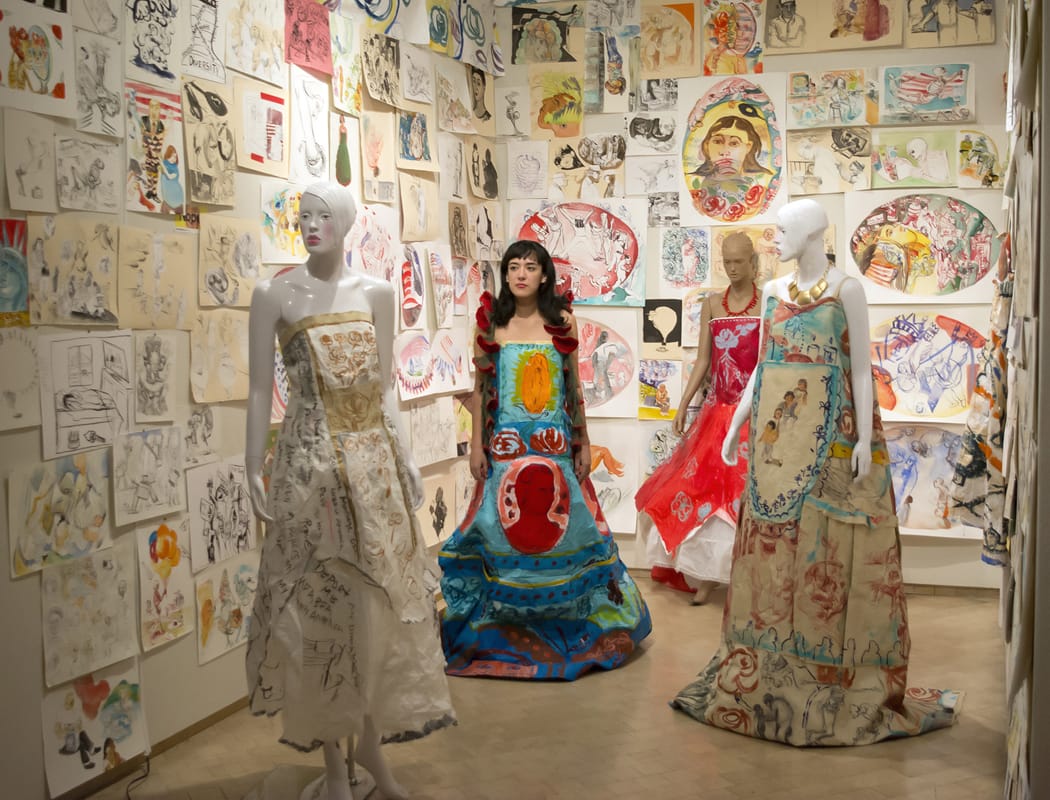
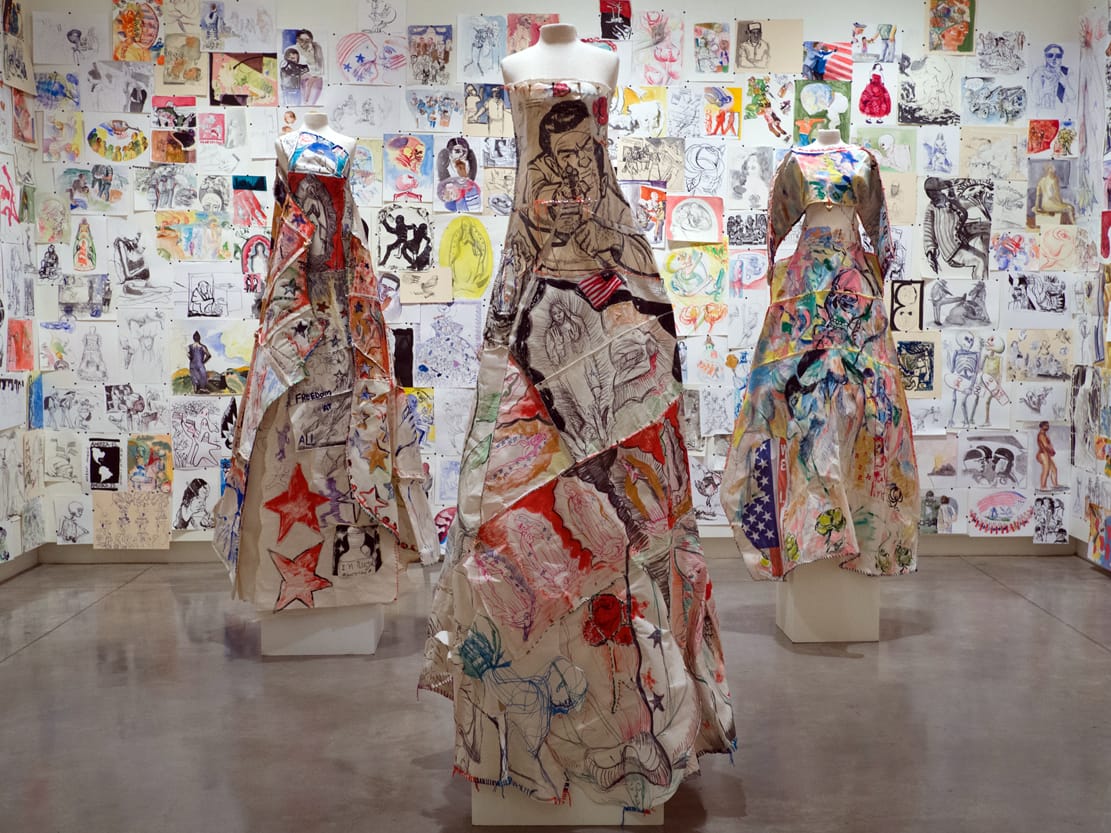
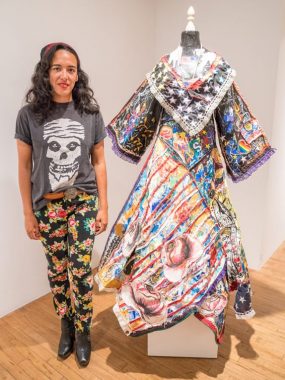
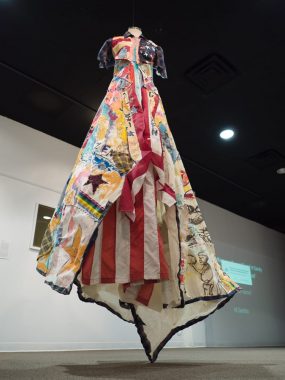
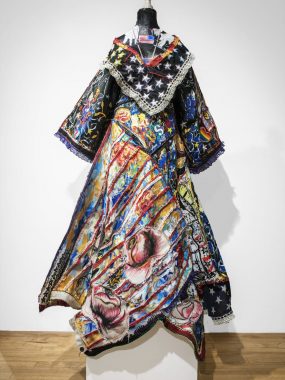
We’re pleased to announce our Spring 2019 Artist in Residence, Maria de Los Angeles!
More about Maria:
Born in Michoacán, Mexico, Maria de Los Angeles is a New York City-based multidisciplinary artist who addresses issues of migration, displacement, identity, and otherness through her drawing, painting, printmaking, and fashion. She holds an MFA in Painting & Printmaking from Yale School of Art (2015), a BFA in Painting from Pratt Institute (2013), and an Associateʼs degree in painting from Santa Rosa Junior College (2010). She was awarded the Blair Dickinson Memorial Prize by Yale University (2015) for her artwork and her role in the community. Maria was a Resident Artist at several notable institutions such as El Museo del Barrio, the Los Angeles County Museum of Art (LACMA), Mana Contemporary and the Schneider Museum of Art with whom she had a solo show exhibition in 2018. Other exhibitions include he group shows with John Jay College of Criminal Justice, St. Johnʼs University, Robert Mann Gallery, and E.TAY Gallery. She participated in a panel discussion on xenophobia and deportation in America at Gavin Brown’s Enterprise. Her work has been featured in Hyperallergic, NYMag, HelloGiggles and the Observer. She is a visiting Faculty at Pratt Institute, where her work was on view in the exhibition, “Contextualizing Fashion.” In 2019 De Los Angeles was a VAST Visiting Artist and Teaching Resident for Printmaking at SOU for the term and her work was featured at the Schneider Museum of Art in the faculty exhibition “From Ignorance to Wisdom” curated by Blake Shell.
I grew up in Mexico hearing stories about the USA; I found the stories to be true. Crossing over the border can symbolize a new future, in the way crossing the sea or going west meant for the frontier seekers. The border is the place where power histories meet. Border problems cannot be avoided, especially for those who are poor.
Every grandmother and parent who migrated here has stories; they are told to us as we grow-up. The stories are all true. My experience is true, but, it’s not criminal. I am not an outlaw!
Currently, my work is rooted in my immigrant experience in the United States. I portray the criminalization of migration, definitions of citizenship, and how cultural identity is perceived by some in this time of fervent nationalism. I begin by drawing from my imagination then, later, from photographs, combining the two to create a macro migration narrative. Geographically, the imagery combines fictional and actual moments on the US/Mexican border; I emphasize what life is like for undocumented persons in the United States.
In depicting the border, this side of it is exaggerated; by that exaggeration it attempts to emphasize the consequences: A place where people lose their children, liberty, life or future.
As I generate hundreds of these drawings, my compositions develop non-hierarchical structures of multiple narratives featuring recurring characters and motifs.
Some scenes are shown in real time alongside the memories of characters within the frame. Like visual poems, these narratives are nonlinear, floating somewhere between political cartoon and abstraction– between harsh reality and faith.
For me, the border is a dividing line between my past and my now. I crossed it once yet I still stand on that line. It represents hope, future; an arbitrary legal trap in a place I call home. It symbolizes to some observers that which is criminal about me and to others that which is beautiful. The border symbolizes love and separation. It symbolizes truth and lies–propaganda. It potentiates openness but actualizes political selfishness and greed. Due to the media, we have a mixed interpretation of what takes place on the border and only a vague sense of the people who come to it or across it on both sides.Thus, the border becomes a part of my identity through no fault of my own. It is a place where humanity gets defined: ours and theirs depending on who is speaking.
We have learned that If the law is not a refuge, then perhaps fables, stories and saints can be refuges. Like religion, they hold the power of hope against hate. For these reasons I explore the relationship of virgen de Guadalupe, an image that is more important to me than lady liberty.
The Guadalupe fable holds the history of colonialism in the same way my veins do and poses a glimpse to the future.The fable is a transcendent story; the feeling is my own.
Immigrants are similarly, globally being dehumanized, especially Mexican Undocumented Immigrants in America.


Comments are closed.